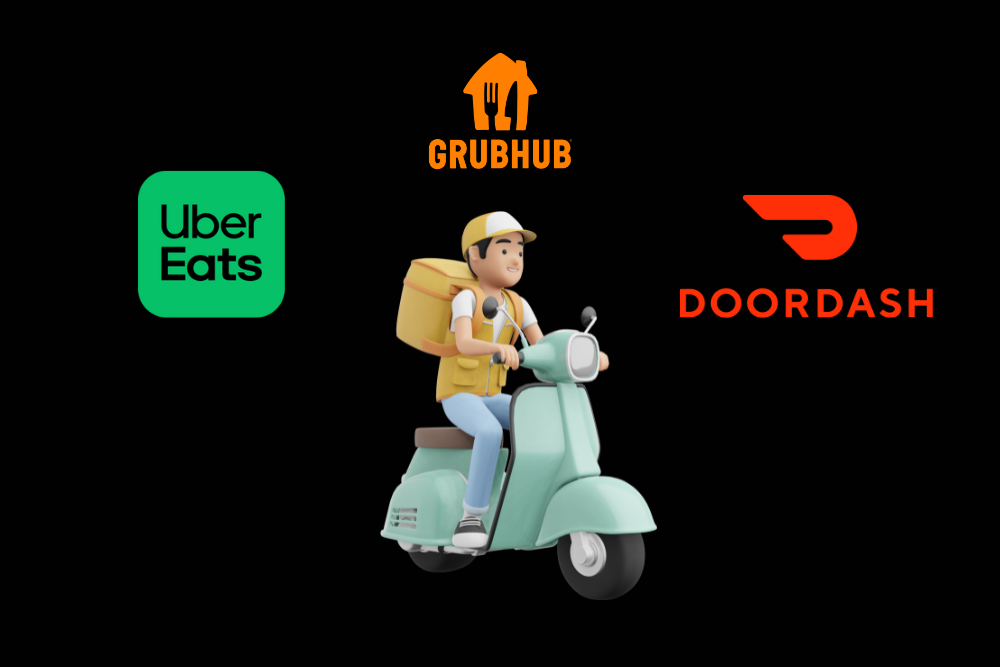Innovation in the food service sector is keeping pace with consumers’ growing demand for ease. A clever option for food companies that are mainly focused on delivery and takeout, cloud kitchens are becoming more and more popular. The real game-changer, though, is learning cloud kitchen tactics and virtual kitchen marketing; setting up your virtual restaurant is just the beginning. Cutting through the clutter and standing out is essential in a crowded market. Cloud kitchens may successfully reach hungry customers wherever they are by using focused marketing strategies, which can convert one-time customers into devoted followers. All set to intensify your marketing endeavors? Come with me as we examine the magic formula that will make your cloud kitchen flourish.
What is a Cloud Kitchen?

The cloud kitchen represents a revolutionary approach in the food service industry, fundamentally different from traditional restaurant operations. Characterized by their delivery-centric services, cloud kitchens eschew the conventional dine-in establishment in favor of a streamlined, technology-driven system focused on carry-out orders, delivery apps, and minimal customer interaction.
One of the hallmarks of cloud kitchens is the minimized overhead. Without the need for large dining spaces and the associated costs of maintaining a customer-facing venue, operators can reinvest savings into quality ingredients, kitchen technology, and marketing strategies. The built-in flexibility also opens doors to exploring multiple cuisine offerings under one roof, further enhancing customer options and potential revenue streams without multiplying overhead expenses.
- Affordability and Scalability
- Exclusively Designed for Delivery and Takeout
- Focus on Operational Efficiency
- Multi-brand Management
| Cloud Kitchen Elements | Traditional Restaurant Elements |
| Reduced capital expenditure on space and decor | Significant investment in ambiance and customer dining experience |
| Highly specialized kitchen staff focused on delivery efficiency | Broader staff roles including servers, hosts, and bussers |
| Multiple brands or menus operated from a single kitchen | Typically one brand or menu per restaurant location |
| Optimized for online ordering platforms and apps | Must balance between dine-in service and delivery orders |
| Use of real-time data analytics to optimize menu and marketing | Greater reliance on traditional marketing and customer feedback |
By recognizing these operational distinctions, cloud kitchen owners can craft marketing strategies that play to the strengths of the ghost kitchen model. An in-depth understanding of online branding, delivery logistics, and the streamlined procedures that give ghost kitchens their competitive edge is essential for navigating the world of cloud kitchen operations. Given its high degree of adaptability and low entry barriers, the model offers significant room for expansion and innovation in the food delivery industry.
Identifying Your Target Audience

The key to effectively marketing a cloud kitchen is determining and serving the correct target market. Businesses may get the demographic targeting insights required to create marketing campaigns that truly connect with potential consumers by exploring target market segmentation and using efficient customer profiling approaches.
Demographic Data Analysis for Target Marketing
Utilizing demographic data analysis is critical in understanding the core characteristics of your ideal customer base. A consumer’s preferences and behavior can be greatly influenced by several factors, including age, gender, income level, and educational background. For cloud kitchens, this can entail tailoring menu items to local demographic groups’ dietary requirements and culinary preferences to focus marketing efforts.
Analyzing demographic data not only helps in crafting personalized marketing messages but also in optimizing operational decisions, ranging from menu creation to choosing the right third-party delivery platforms.
Customer Behavior and Preferences
Analyzing consumer behavior in addition to basic demographics is crucial for developing marketing strategies for cloud kitchens. By gaining an understanding of the most popular meal times, ordering patterns, and cuisines, you can create a customer profile that will help you decide what, how, and when to communicate with your audience.
- Ordering Patterns: Do your customers usually place their orders at the same times of day, or do they have more erratic habits?
- Meal Preferences: Which cuisines are your customers’ favorites, and how can you accommodate them?
- Price Sensitivity: How does pricing impact the ordering decisions of your segment?
Through the integration of demographic targeting insights with a comprehension of customer behavior and preferences, cloud kitchens can initiate highly efficient, precisely targeted marketing campaigns. This strategy makes sure that every marketing dollar is used effectively and has a high chance of turning interest into actual sales.
Developing a Strong Brand Identity
Creating a strong brand identity is essential in the highly competitive cloud kitchen market. The persona of your brand, the emotions it arouses, and its USP set your cloud kitchen apart from competitors. The ability to communicate a brand’s values, message, and customer promise is essential for it to have a long-lasting effect on the market. It’s the cogent story that connects with your audience and fosters loyalty—not just a logo or memorable tagline.
It’s critical to consider “What makes my service uniquely beneficial to my customers?” when refining your cloud kitchen’s USP. This could be the result of a unique ingredient, a creative cooking method, or a creative ordering procedure. By meeting consumer demands that rivals haven’t yet fulfilled, the USP should close a gap in the market.
- Identify: Pinpoint what sets your services apart in the realm of cloud kitchen branding.
- Define: Formulate your unique selling proposition to capture the essence of your brand.
- Communicate: Consistently articulate your USP in every marketing channel to embed the brand identity in your customers’ minds.
Creating a compelling brand story is another crucial aspect of cloud kitchen branding. It should weave the origins, mission, and vision of your kitchen into a cohesive narrative that entices and engages your audience. Here are a few steps to drafting your brand story:
- Start with the inspiration behind your cloud kitchen concept.
- Detail your commitment to quality and innovation.
- Share testimonials and stories of satisfied customers.
- Highlight community involvement or sustainable practices if applicable.
In the digital age, transparency, and authenticity are key to successful cloud kitchen branding. In addition to drawing clients, a compelling brand narrative and a clearly stated USP will help to create a devoted following around your kitchen.
Optimizing Your Online Presence

Nowadays, the digital sphere is the first line of defense for food businesses, particularly cloud kitchens, when it comes to consumer interaction and brand development. Achieving success in cloud kitchen marketing broadens your customer base and effectively communicates the core of your offerings to food enthusiasts worldwide. A strong online presence can be attained by combining a responsive and visually appealing website design, astute social media tactics, and mouthwatering food photos.
Website Optimization for Cloud Kitchens
For food businesses, a visually appealing and user-friendly website design is essential to turning visitors into devoted patrons. A cloud kitchen website should have an easy-to-use ordering system, highlight menu items, and provide customer reviews to establish credibility. To guarantee that your website appears highly in search engine results and draws in visitors, SEO strategies should also be used.
Leveraging Social Media Platforms
Maintaining a conversation with your audience, learning about their preferences, and instantly acting upon their feedback all depend on social media engagement. Social media sites like Facebook, Instagram, and Twitter present distinctive chances to establish a connection with consumers, whether via captivating narratives, interactive surveys, or first access to information. Using influencers and targeted advertising together can help spread the word about your cloud kitchen even more.
Food Photography and Visual Appeal
In the food industry, the power of a single image to entice and allure cannot be overstated. Excellent, eye-catching food photography encourages social media interaction and influences users’ decisions to place orders. Every dish that is served should not only be visually appealing but also consistent with the promise and image of your brand.
| Aspect | Benefits | Action Steps |
| Responsive Design | Improves user experience on various devices | Implement media queries and flexible grids |
| Easy Navigation | Faster and smoother site exploration | Simplify menu structure and streamline page hierarchy |
| SEO | Better online visibility and higher traffic | Use targeted keywords, meta descriptions, and quality backlinks |
| Social Media Presence | Increases customer engagement and brand awareness | Create regular, themed content and engage with followers |
| Food Photography | Conveys brand story and enhances appeal | Hire a professional photographer and use consistent styling |
Making the Most of Food Delivery Platforms

Third-party delivery services have become indispensable in the food and restaurant industry, particularly for cloud kitchens, in a time when convenience is king. If utilized wisely, these platforms provide a strong means of increasing your visibility and maximizing sales. Here’s how cloud kitchens can cultivate a profitable partnership with these services.
Menu Optimization: The digital menu is your primary tool for enticing customers. Prioritizing clarity, mouth-watering descriptions, and smart categorization will guide potential customers through your offerings effectively. Consider these key strategies:
- Highlight popular dishes that are most likely to be ordered to capitalize on proven customer preferences.
- Include high-quality images for each menu item, ensuring that customers are visually drawn to your dishes.
- Strategize menu pricing to account for the commission fees from delivery services without compromising value perception.
Moreover, maintaining consistency in food quality is paramount. It enhances customer satisfaction and promotes repeat business, which can be tracked through data provided by these platforms.
Here’s a brief overview of customer review management and its impact:
- Actively monitor and respond to customer reviews to show engagement and willingness to improve.
- Use positive reviews as marketing assets; showcase them on your platform and social media profiles.
- Address negative feedback promptly and professionally to demonstrate commitment to customer satisfaction.
In the end, third-party delivery services are an extension of your cloud kitchen’s brand, not just a way to get your food to customers. You’re not just selling food when you tailor your menu to suit customer preferences and make sure they always have a great experience—you’re creating a brand that will endure the ups and downs of this quickly changing market.
Engaging with Customers via Social Media
Any cloud kitchen hoping to succeed in the current market needs to understand the strong link between social media and customer engagement. Customized social media campaigns and interactive promotions can revolutionize how brands engage with their audience, resulting in higher online visibility and brand loyalty.
Creating Interactive Content
Interactive content on social media not only captivates attention but also encourages participation, which is vital for building customer relationships. Examples include polls asking for the next menu item addition, cooking challenges, or live Q&A sessions. These activities keep the audience engaged and provide valuable feedback for the business.
Cultivating an Online Community
For a cloud kitchen, a robust online community might be the difference between being a flavor of the week and a community staple. Creating a space where customers can interact and share their experiences promotes a sense of belonging. Spotlighting customers’ dining experiences, responding promptly to comments, and regular engagement can establish a thriving digital ecosystem.
Promoting User-Generated Content
User-generated content is an endorsement of a brand’s value, shared authentically by the customers themselves. Encouraging patrons to post pictures of their meals with specific hashtags or hosting contests for the best food presentation are great strategies to promote user-generated content, which also provides free and compelling marketing material.
| Strategy | Benefits | Examples |
| Interactive Content | Boosts engagement, gathers customer feedback | Polls, Challenges, Q&A Sessions |
| Online Community Building | Enhances brand loyalty, creates customer advocacy | Feature customer stories, respond to feedback |
| User-Generated Content | Provides social proof, extends content reach | Hashtag campaigns, Photo contests |
Promotions and Discounts: When to Use Them

Discount marketing and promotional campaigns are potent tools for cloud kitchens looking to attract new customers and maintain a loyal following. However, the strategic utilization of cloud kitchen special offers is essential to ensure they contribute positively to your brand’s value and bottom line. Now let’s discuss when and how to best implement your discounts and promotions.
- The Launch of a New Menu Item: Customers may be persuaded to try something new by a temporary discount on a new dish, which may result in them becoming regulars and ordering it at full price in the future.
- Seasonal and Holiday Marketing: Important dates are a wonderful time to offer timely promotions that fit your customers’ celebratory vibe.
- Customer Milestones: Celebrate customer birthdays or anniversaries with personalized offers, which can deepen customer relationships and encourage repeat business.
- Low Demand Periods: Use offers to boost sales during typically slow hours or days of the week. This can help in maintaining a steady flow of orders and balancing kitchen operations.
It’s critical to ensure promotions don’t devalue your offerings. Define the terms and limits of your offers clearly, such as “first-time customer” discounts or “buy one, get one free” deals with precise conditions. Monitoring the impact of your promotional efforts on both sales and customer sentiment is also key to gauging their success and refining future promotional campaigns.
Local SEO for Cloud Kitchens

The essence of visibility in the competitive cloud kitchen market is strongly linked to local SEO efficacy. By tailoring SEO practices to your geographical locale, your virtual kitchen can climb the ranks of search engine results, placing your offerings in front of a targeted, hungry audience. Let’s delve into the essential components of local SEO that can bolster your cloud kitchen’s online reputation and carve out a space for your brand within the community.
Google My Business for Cloud Kitchens
In the world of local search marketing, Google My Business (GMB) optimization is a necessary step that cannot be skipped. Making sure your cloud kitchen’s GMB listing is precise, informative, and interesting can have a significant impact on how far you can get in the community. From menu highlights to operational hours and compelling images, a GMB listing serves as a digital front door to your kitchen, inviting local food enthusiasts to explore your gastronomic delights.
Building Local Citations
Local citations, which are instances where your cloud kitchen’s name, address, and phone number (NAP) are mentioned on other websites, directly impact your search engine credibility. As you accrue more citations from reputable local business directories, event listings, and articles, search engines begin to perceive your cloud kitchen as an established presence, thus nudging your rankings higher.
Customer Reviews and Ratings
Customer reviews and ratings are the currency of trust in online reputation management. They offer social proof to prospective customers and influence the purchase decision process. Encouraging satisfied patrons to share their experiences on popular platforms can create a positive feedback loop that not only improves your local SEO standings but also sets a benchmark for quality and customer satisfaction.
FAQ’s
What are the key marketing strategies for a cloud kitchen?
Important cloud kitchen marketing strategies include building a strong online presence, making use of social media, engaging with customers through promotions, discounts, and interactive content, and making the most of your offers on third-party food delivery platforms.
How does a cloud kitchen differ from a traditional restaurant?
Because it focuses on food delivery rather than dine-in service, a cloud kitchen can operate at a much lower overhead. In contrast to conventional dining establishments, cloud kitchens utilize internet-based ordering and delivery platforms, frequently functioning from more affordable, off-the-beaten-path locations.
How important is demographic data in cloud kitchen marketing?
To segment target markets and create highly successful, customized marketing campaigns, demographic data is essential. Having a thorough understanding of your target audience’s age, gender, income bracket, and preferences will help you create more effective customer profiles and promotions.
What role does brand identity play in the success of cloud kitchens?
Cloud kitchens need a strong brand identity to differentiate themselves in a crowded market. Customer recognition and loyalty are increased with a strong brand identity, which includes a USP and an engaging brand story.
Why is optimizing the website and social media presence vital for cloud kitchens?
Since cloud kitchens don’t have a physical location that clients can visit, their online presence acts as their brand. In addition to enhancing the overall digital customer experience, an optimized website and active social media profiles help showcase the menu and food photography and increase customer engagement.
Can cloud kitchens benefit from food delivery platforms?
Absolutely. Cloud kitchens can significantly benefit from food delivery platforms by increasing their reach and convenience. Increased revenue and order volume can be attained through menu optimization, consistent quality, and favorable customer reviews on these platforms.
What are the advantages of using social media for customer engagement?
Cloud kitchens can create interactive content, promote user-generated content, and establish an online community through social media. This interaction strengthens bonds, boosts brand loyalty, and encourages word-of-mouth advertising.
When should cloud kitchens offer promotions and discounts?
Promotions and discounts should be strategically offered by cloud kitchens to draw in new clients or during slow times. The secret is to increase sales with these incentives without lowering the perceived worth of the products or services.
How does local SEO benefit cloud kitchens?
To draw in local clients, cloud kitchens must increase their visibility in local search results, which is made possible by local SEO. Building local citations, maintaining a Google My Business profile, and promoting favorable client feedback and ratings are all important components of local SEO.
What types of promotions work best for engaging customers with cloud kitchens?
Seasonal or event-based discounts, meal combos, referral rewards, and time-limited offers are some examples of interesting promotions for cloud kitchens. Campaigns on social media that are interactive and encourage participation can also be very successful in engaging customers.
